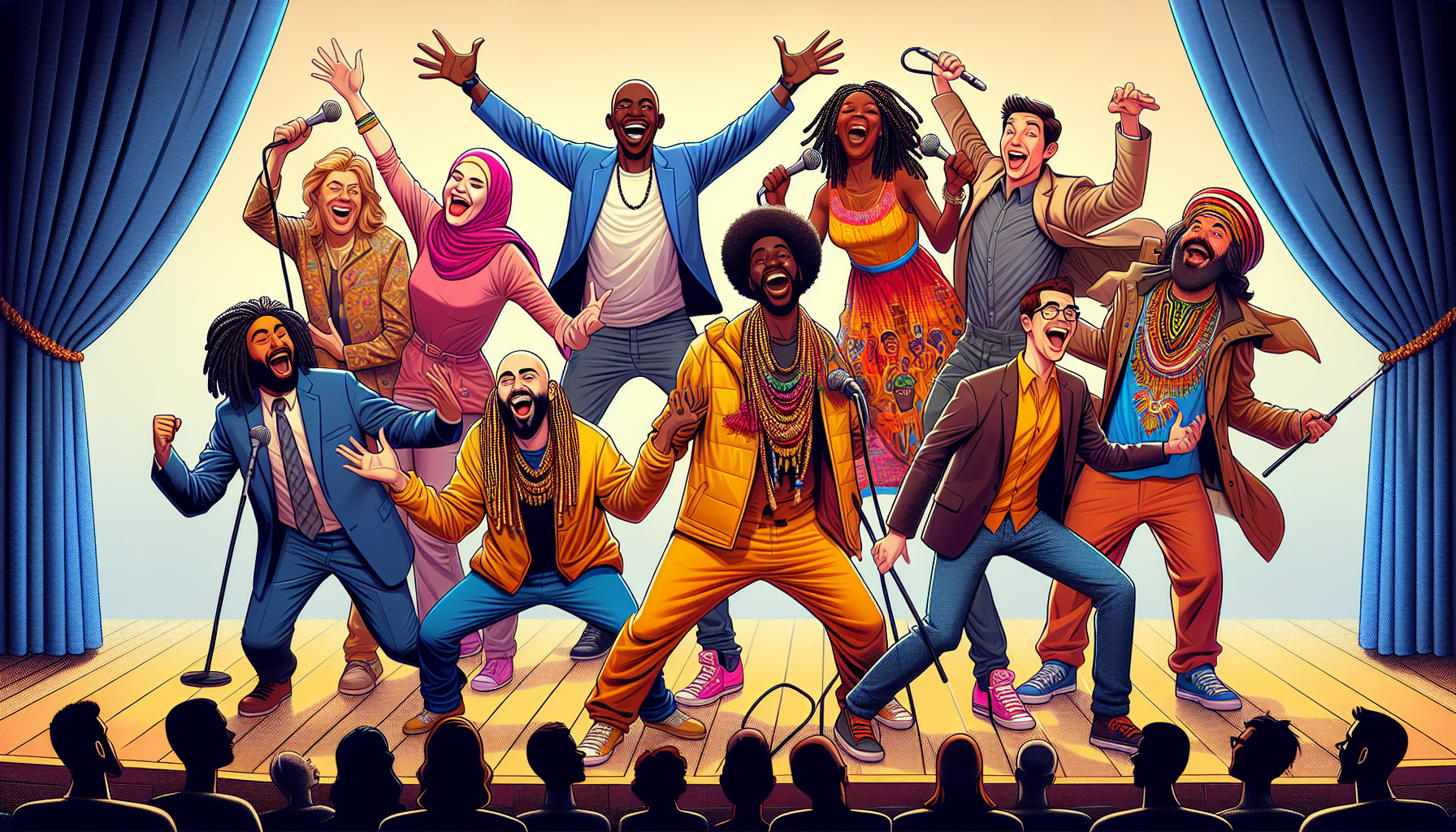
Cracking the Code of Comedy Ensembles
So, you want to master the arcane art of assembling a comedy crew that could out-funny the cast of Friends? Well, grab your notepad, a pen, and a rubber chicken (you never know) and buckle up! We’re diving into the laugh-loaded world of comedy ensembles where timing is everything, and character quirks are worth their weight in gold.
Step 1: Assemble Your Merry Band of Misfits
Every great comedy ensemble is a motley crew of personalities that clash, mesh, and ultimately complement each other. Think of it like a bizarre potluck; everyone brings something different to the table. First, you need the straight-laced one, the glue holding the chaos together. Next, throw in a wildcard, unpredictable as a squirrel in a balloon factory. Don’t forget the sarcastic one, spicing up scenes like hot sauce on a taco. And finally, the naive dreamer, who’s as optimistically clueless as a puppy in a physics class.
Step 2: Crafting Characters with Quirks
Characters in a comedy ensemble aren’t just people – they’re caricatures. Each one needs a quirk or three but don’t just sprinkle in quirks like a chef gone wild with seasonings. Each quirk should serve their identity. Is your character a nerdy know-it-all? Maybe they spew random facts at inappropriate times. Is your character the resident jock? Perhaps they can’t help but turn every activity into a competition. Remember: quirks should add spice, not dominate the dish.
Step 3: Stirring the Pot with Relationships
The real magic in a comedy ensemble doesn’t just come from who the characters are alone but how they rub against each other. The relationships between them should be dynamic; think of a seesaw perpetually in motion. Will they, won’t they? Did they just? Why would they ever? Building relationships is like cooking a stew, letting it simmer to develop the flavors. Your characters should challenge each other, push each other’s buttons, and occasionally throw a pie in someone’s face (figuratively, or why not, literally).
Step 4: The Drama of Humor: Conflict!
What’s comedy without a bit of conflict? As delightful as watching paint dry. Introduce conflicts that are as absurd as they are amusing. Maybe there’s a coveted trophy for the Best Couch Potato and everyone believes they’re the rightful couch king. Or perhaps the characters run a bakery and accidentally invent a bread that makes people sing opera. The more ridiculous yet relatable the scenario, the more your audience will be rolling in the aisles.
Step 5: Timing is Not Everything… It’s the Only Thing!
In the bustling bazaar of comedy, timing is the currency. It can make or break a joke. When scripting interactions, consider the rhythm and flow of dialogue. Fast exchanges can heighten energy, while a well-timed pause (dramatic or awkward) can enhance a punchline. Be the conductor of this chaotic orchestra, knowing when to speed up the tempo or when to let a silent stare stir laughter.
Step 6: Throw Them into the Deep End
Finally, test your ensemble’s dynamics by throwing them into the deep end of ridiculous situations. How they handle it reveals more about their characters and relationships. Imagine them getting locked in a zoo overnight or inexplicably becoming the caretakers of an alpaca farm. It’s about putting them in scenarios as peculiar as finding a llama at a French bistro.
To master comedy ensembles, mix up a diverse cocktail of characters, stir in potent relationships, sprinkle drama liberally, and serve it up with impeccable timing. Remember, a truly funny ensemble doesn’t just deliver jokes—they make us adore the merry band of oddballs as they fumble and triumph through their misadventures. So go forth and let the hilarity ensue—we’re all here for the inevitable laugh-out-loud bloopers and heartwarming mishaps!






